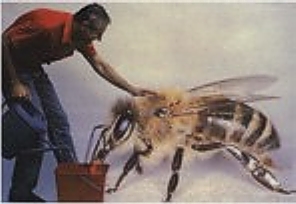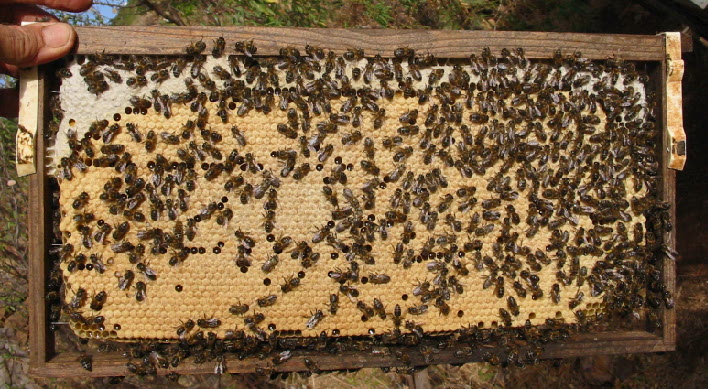The bee apis mellifica mellifica is dying all over the world.
New diseases are appearing and are treated with more and more chemicals.
The bees get weaker and weaker.
Our solution is to get a strong bee which resists to all kind of diseases without any
artificial treatment.
We got aware that we, the beekeepers, are making quite many mistakes in handling
our hives. Some are caused by only seeing the comercial aspect of beekeeping,
others are pure ignorance.
If we see that the asian bee apis cerana is living with the Varroa mite for a very long
time without any harm and if we think that there is no animal in nature that kills his host,
we come to the conclusion that the alarming situation of our bees is caused be us.
In this webpage I like to inform you of our errors and if we are able to change our way of
hive handling, we will get a healthy and sustainable bee.
We are now quite a few beekeepers all over the world who have achieved this aim.
We only work with honey, polen and propolis.
NO CHEMICALS.
We have thousands of hives without any treatment for many years.
It works 100% - it only depends on our power and skills.
The key problem is the size of the bee
100 years ago the bees have been much smaller.
A belgican profesor ,Beaudox, created a bigger bee, using wax foundation with
bigger hexagonal cells than those that existed in nature.
"a bigger bee brings more honey"
And until now the size of the bigger cells remaines the same.
The cell size of the wax foundation that is sold all over the world is too big.
Of a big cell emerges a big bee, of a small cell a small bee.
The bee apis cerana who lives with the varroa mite for thousands of years is a small bee

The cells
of wax foundation in the market is of 5,4mm diameter.
We are using 4,9mm and the bees in nature do it until 4,6mm.
The drone of apis cerana is just the same size as our big bees!!
So the varroa mite confounds the worker bee brood with the drone brood.
In apis cerana, the mite is mostly concentrated on the drone brood.
In the big bee they go to the worker brood and there they multiply enormously.
With the small bees it is quite different:
In spring and summer the mites concentrate in the drone brood.
The drones are very very important in our small cell hives.
They attract all diseases, work like a liver and avoid brood infection of the
worker bee.
When the hives do not rear much drones in autumn, the varroa has to go to
the worker brood, although they do not like it, because they know that they
cannot multiplicate good enough there.
In this season the bees do not have much to do anymore and they can
dedicate their time to other things than brood and honey.
They can detect from outside that there are mites in the capped brood
cells, open them and get off the mites.
They open the cells when the young unborn white bee in the cell has purplish
eyes. If the mite is on the head of the baby bee, they bite it and they bleed to death.
If the Varroa is at the bottom of the cell, the bees eat the young unborn bee to get to
the mite.
But the problem is
how can we get the small bee?
If we add a small cell foundation to a big bee colony they will do a disater.

We have to go step by step.
For
Dee Lusby, arizona, it took 20 years to achieve
it, for me ,with her help,
it was 6 years.
If the bees are able to draw the small cells perfectly,
it is very likely that
they can defend against the varroa mite and to all other diseaese.
(but
we also have to change quite a few things in our hive handling)
This is one of our best hives that is drawing the small
cells perfectly.
The queen is a mother of the queens that we are rearing.
but now we can present a solution that any beekeeper can have
resistant small cell bees within a few months
using our Kit

